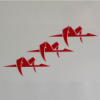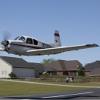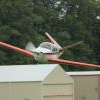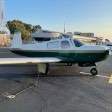Leaderboard
Popular Content
Showing content with the highest reputation on 03/12/2021 in all areas
-
Just a quick update to this saga... Jewell finished the engine overhaul and it has been delivered back to JD and SWTA in Smithville, TX. It's been pulled out of the crate and JD's been going over it carefully to make sure everything is correct and as expected. Hopefully I'll be able to post updates on a regular basis as we get closer to wrapping up this one and getting her back in the air. I plan to head to Smithville somewhere around the 28th - 30th of this month to start flying and go through the break in process. I intend to have it 100% completed before flying it back to Denver.5 points
-
Update on N6744U... ...Not much. The past six months have been hectic for me. I've been busy working as an aerial survey pilot in a 172 working on a project on the east coast, in a different hotel room every night. The plus side is I was within 2 hours of home, so if there ever was a stretch of bad weather, it was cheaper for my boss to buy gas and let me fly home versus having me sit in a hotel for days on end. Also, my mechanic was cheaper than most guys on the road for scheduled maintenance, so two reasons to visit home. I've only flown the Mooney once or twice in the past few months and I feel guilty. We flew the piss out of these planes. In January, I flew 142 hours in a 30-day period. We were averaging about 8.0 Hobbs a day, my longest being a 10.5. With that, I eclipsed 1200 hours total time, which put me past Part 135 hiring mins. And that played a crucial part shortly thereafter- Since December I've been on every online hiring board trying to find a more permanent job. Survey was fun, but you got paid per flight hour, so a 10-day stretch of weather means you are eating beans for two weeks. Plus, I haven't had health insurance in close to two years now and IRS 1099 plain sucks. While out on the road, I found a job posting for a Cessna 208 Caravan pilot position for a Part 135 on-demand cargo operator in the Northeast. I am familiar with the operator as two of my very close friends fly for them and visiting them up in Maine, I've been able to talk to them about the job and they have had absolutely nothing bad to say about it. So I applied online and called my friend. "Hey," I said. "Wiggins is hiring. I just put in an application." My friend replied: "DUDE! Send me your resume, I'll go walk it into the chief pilots office right now!". The next day, while over South Carolina at 3,000 feet and listening to the Spice Girls, my phone rings and its got a 207 area code- New Hampshire. The base state of Wiggins. I scrambled to answer it while holding on my survey line with my knees. I'm yelling over the roar of the engine and tornado of wind that exists due to the 12" hole in the floor. "HELLO!?...." a friendly female introduced herself as HR and wanted me to do a video chat interview in two days. I was ecstatic! My coworker and I drove to a Mens Wearhouse that afternoon and with my last $100 I bought a dress shirt, tie, and blazer. No pants. Because why? The interview went smoothly. They asked me one question- 'how did you get into aviation?' I spent about 7 minutes giving them a love story. I told them about the Mooney. The endless nights of ramen noodles. My experience ferrying from California to Florida and my family who are all pilots. That must have resonated with the chief pilot because he loved it. They offered me a conditional job offer, and even better- a choice of bases! I chose Bangor, ME because of the friends I have up there. A week later, my replacement was hired and I spent a day with him in the 172. I felt great, not only for moving onto something bigger and better, but the fact my 1200-hour self wasn't hogging the great hour-building experience that is survey. Something that would better benefit a 250-hour guy (who my replacement was). I got him squared away and went home to pack. I quickly decided against bringing the Mooney up at first and would come back to get it once I get settled in. So I packed both of my cars and my girlfriend drove my Toyota and followed me in my Mustang. I can't live without my Mustang- its too damned fun to drive but I also knew I didn't want to drive it in the salt nor would it last long before ending up in a ditch with Florida summer performance tires on it. So we drove both and I'll keep the Mach 1 parked until spring. 10 hours to our first stop in Norfolk, VA where my sister lives. I visited her for a day, also got to see the BB-64 U.S.S WisKy (I love naval history and ww2 ships) and continued the rest of the 10 hours to New Hampshire for indoc. Getting past Delaware, I saw snow for the first time in a long time. And first time driving in it. I'm sure I was getting a lot of looks with my Florida plates and a Mustang doing 40mph in New Hampshire while I was getting passed by everyone in a Tahoe and 4WD trucks. I took the Toyota up to Maine on my first weekend off to scout for an apartment and got caught in what I call a snow storm but some of you probably call a sunday afternoon. Roads slushed over, even with brand-new All-Season tires on my FWD car, it still broke loose at 20mph. I lived, got to experience Maine some and went back to NH to finish indoc. Training went well. 8 days of Hazmat, company policy, 135 ops and requirements, icing basics, and all the basic paperwork stuff. I got to sit in the airplane and realize how much over my head it seemed I was in. All 1,400 hours I currently have are in 1960s airplanes with their factory panels. I've got maybe 4-5 hours behind a GNS430, and my only 3 GPS approaches are from my multi checkride two years ago. Turbine operations, G1000, autopilot, A/C, FIKI, and of course Part 135 rules- made this seem daunting. After indoc, they airlined me over to FlightSafety International in Wichita, KS for three days of ground school and five days in their Level-D simulators. So far we've done everything from basic VFR hand flying to feel the weight of the plane to IFR approaches down to minimums on the fully coupled AP with the wings fully iced over, generator offline, and half of the displays blacked out. I've also accidentally shut down the entire G1000 suite on an approach when I closed a guarded backup switch and introduced a failure that I, nor the instructor, had planned on, but I got points for quickly going to the "steam gauges" as my hand quickly undid the last action I took to get everything back online. So quite fun so far. I've had instances of the FD trying to take me elsewhere and I'm sure I was telling it to do something wrong, but almost to the FAF I didn't have time to fart with it- so I just hit the AP disconnect and looked at my paper charts and hand-flew the rest of the VOR approach. The instructor gave me props for reverting back to "what I know" and hand flying. But I know I have to learn the G1000 system better. I've downloaded two books on it and spend most of my free time in the hotel room reading about shortcuts and ways to make it work for me. (This next shot was last 15 minutes left of our session- we decided to have a little break and do some STOL competition in Alaska. Got it down and stopped in 600feet) I return to Manchester tomorrow and starting next week I get my first taste of flying the real airplane with an instructor. But one thing has surely stuck in my mind- this higly dictated, scheduled world of Part 135 sure does not seem like fun flying. I know I have to get the Mooney up here ASAP. I'll need a break from flying and go flying to clear my mind from flying with some good flying.4 points
-
Anthony ( @carusoam ) is only a PP, not a picture orientator (PO), however he does do it as a hobby in his spare time.4 points
-
Yeah, I know. Kind of late to be putting in a pre-heater. I picked up a 750/1500W quartz heater at the local hardware store for $25. It has overheat shut-off and a tip-over kill switch. I didn’t like running an extension cord through an open door or baggage hatch because I worry about mice moving in so I made this adapter for the pilot’s no-draft window. Cost me all of $2.99 for the plug. Used scrap 1/8” MDF cut with a jigsaw and an old extension cord. It’s plugged into a wifi outlet so I can turn it on from home. Do I qualify for the CB club now?3 points
-
Unless your engine is making metal, most the debris in an oil filter is carbon and waste deposits. Wash your filter media in solvent, let it evaporate and see what remains and you will see what I am talking about. So you change the oil, and run it across the old carbon and deposits creating more acid only faster. What is the point of changing the oil if you do that? In terms of cost, a filter is a minority part of the oil change, so why not change it?3 points
-
I'll get some more pics this weekend and post. All open source still! Sent from my iPhone using Tapatalk3 points
-
Well, it was about 45 years ago, so memories have dimmed a little and my old logbooks were more vague than I expected. I have the vague recollection of it being somewhat spread out over several flights with our club's chief instructor, who was the designated DPE for our club. A lot of 3, 4, 5, 6 minute flights in those years. Thermal filled days were few and far between on a field on the west coast just behind the dunes on the North Sea. We'd have a summer camp every year where we took 2 of the club gliders to Terlet, the Dutch equivalent of Elmira, the National Soaring Center. Being inland with many more convective days it is where most of us got our Silver and Gold badges. That is also the location of the only checkride I can specifically remember. I asked the National Soaring Center if I could get checked out to fly their Ka-13 trainer for passenger flying (that's how you squeeze in a few extra free flights) and their Ka-6CR (a decent high-performance glider by the standards of the 60s). When I got to the Ka-13 the instructor had taped off the entire panel. Not a single instrument was visible and the string on the canopy was the only flying aid I'd have. After the launch and bumming around for 6-7 minutes I entered the pattern at what I judged the right altitude. Shortly after turning final and on a nicely stabilized approach I hear the unmistakable sound of seatbelts being unbuckled coming from the rear. The instructor heaved himself half-way out of his seat to stick his head near mine to look and check that I haven't removed the panel cover. He apparently had a hard time accepting that I'd managed to nail the altitudes and speed To this day, even in my Mooney, I use my ears as much as my eyes during phases of flight where airspeed (and rpm) matters. Coda: I was a typical and impulsive teen and had arranged all this without informing/asking permission from the club instructor who acted as chaperone and GM of our summer camp. The next day he saw me climb out of a Ka-13 with a passenger and went just about apoplectic thinking I'd just gone and was doing passenger flights without the appropriate endorsement Better to ask for forgiveness than permission...right?3 points
-
Mooniacs: Giving up the C and pulling the trigger on a M20K 231. Anyone in the Riverside-SoCal- area with a 231 willing to to give me a nickel's worth of the ropes and a heads up on the important dos and donts before I head east to pick it up in Texas? Maybe a short ride? All costs on me of course. Its an LB engine with no intercooler or Merlyn waste gate. Call/text me at 909-615-5881 or email garrybrown7@gmail.com. Thanks all. Garry2 points
-
Different Zero's, Zero time since major overhaul unless its rebuilt then zero time since new2 points
-
I get what you guys are saying, but unless the critical mass is 1 detectable unit, running the filter for half as long just means you have to decrease your threshold of what is “abnormal” to half as much. This has been discussed before but the sole purpose of an oil change isn’t to change the oil but also to inspect “under the hood” and potentially detect minor problems before they turn into major ones. Just shoving a quick drain hose in the bottom and adding a few quarts of oil will not accomplish this. Just like with the preflight, most of the time it’s a “waste of time” except when you discover something potentially catastrophic. Did you guys read the NASA report this week where an airliner took off without a pitot tube which they later found on the ground? No matter how you try to spin in (pun intended) twice the interval means twice as long until you potentially find something catastrophic.2 points
-
The longer 48110 (for Lycomings) or 48109 (for Continentals) filters are designed for 100 hours of service. You can drain the sump at 25 or 50 hour intervals and replace the filter at 100. You get a better debris sample at the longer interval. And if you're using filter media analysis in addition to oil analysis, a 25 hour filter won't tell you anything, a 50 hour filter will give you some details, and a 100 hour filter will give you the rest of the story. Oil filters are the same as air filters, they catch more material later than they do at the beginning of service.2 points
-
I made a video about all of my different headsets and how they compare in the real world. I've had most of them 10 years or more. So, this isn't even so much a "review" as sharing my experience based on having these headsets. Is the best aviation headset not the most expensive one? Is it time to trade in the ANR headset? What the heck are you doing still flying with a basic passive David Clark? Well, let's find out. The headsets I own and discuss are: NAV-DATA ND-71 - $104 https://www.aircraftspruce.com/catalog/avpages/navdadahdset.php DAVID CLARK H10-13.4 - $337 https://www.aircraftspruce.com/catalog/avpages/h10_134.php QUIET TECHNOLOGIES HALO - $340 http://www.quiettechnologies.com/index.php?route=product/product&path=66_59&product_id=51 BOSE A20 ANR HEADSET - $996 https://www.aircraftspruce.com/catalog/avpages/bosea20dualwithout.php I don't have any stake, sponsorship, or monetary incentive in headsets or aviation for that matter. But, I'd certainly like to! So if anyone wants to give me money for a biased review, maybe next time.2 points
-
I agree with the advice that you should find a good Mooney instructor and get some transition training in the aircraft. Operation of that engine is not as simple as a C or some other normally aspirated engine. That said, it is not hard either, it is just different. I will give you a few tips so you don't blow the engine on your first takeoff. First, throw out the window everything you have learned about engine management in an NA aircraft. It does not apply to a turbocharged engine. You do not ever lean on takeoff, for example, regardless of airport altitude, not even Leadville. You will see TIT and CHT's exceeding redline in about 2 1/2 minutes from takeoff if you lean. Turbocharged engines like being operated very rich at full power. The POH says you need 22.5-24.0 GPH at full power, and you really do need that. The throttle on the 231 must be managed by the pilot. It is set up so that, as the aircraft ascends in the air column, the pilot can put in more throttle and ask more from the turbocharger. This means that it is possible, at a takeoff elevation, to easily overboost the engine. You do not ever firewall the throttle on takeoff. You will also find that, when you add throttle, it takes a little time during your takeoff roll for the turbocharger to spin up and create full power. This is normal and is called turbo lag. You add throttle, the engine spins up and in doing so produces more exhaust, the exhaust powers the turbocharger and that spins up, and when it does you will get a significant boost in horsepower, which in turn causes a stronger exhaust flow yet, which causes more output from the turbocharger, and so on. On takeoff, when you start your roll, you put in about half throttle, or maybe two-thirds, and let the turbo kick in. Then you gently add or subtract throttle to get to the 40" you need for full power takeoff. You leave the fuel control at all times during takeoff and climb, at full rich. Don't let anyone, including any instructor, tell you otherwise. You pay for the engine. You will find that the throttle needs a little adjustment during the takeoff roll to keep it at or under 40". Ram air also increases the power output of the engine as the aircraft picks up speed, so you need to watch the MP and if it is higher than what you want, gently pull off a little. In the non-Merlyn engine there is an issue called bootstrapping, which I mentioned. You put in some throttle, the engine speeds up, a moment later the turbo kicks in which causes the engine to speed up further, which causes the exhaust flow to be stronger, which causes the turbo to put out more air, which causes the engine to create more power, etc., etc. It is not the major issue some make it out to be, but because of bootstrapping you want to make progressive throttle movements, you don't shove the throttle anywhere as you might in an NA engine. You must keep the TIT inlet temp under redline. It is best when learning, to operate Rich of Peak. Do LOP later, when you understand the engine. If TIT is going too high, put in more throttle and make the mixture richer. If it is still going up and the cowl flaps are not already open (they need to be open on takeoff and long climbs), then crack the cowl flaps to the first position or even full open. If that does not work, reduce power, but it is rare to get into that kind of scenario. You have a Compressor Discharge Temp limit of 280 dF. Honor it, it is there to protect the engine from detonation caused by too hot induction air. You will find that this limits your ability to climb much above the mid-teens in warm OATs. Doesn't matter what the service ceiling is, your first job is to protect the engine. Don't plan on Flight Level flying regardless of what the POH might say. That's marketing. As for landing, someone said that speed is harder to control in the K than the C. I have not flown a C so can't make that comparison, but I have flown a J and found that you can throttle the engine back on final in the K and because it is heavier, the aircraft will fall better without adding alot of speed, where the J wants to float forever. You will get the hang of it. You do need to get your airspeeds under control in the downwind and base legs, I use 90 on the descent part of the downwind and add half flaps, and 85 on base, then 75 on final. You probably will find that in heavy gusty crosswinds you need more final speed to get rudder authority, but leave that for later. You will want to trim up on landing, there is alot of engine weight out ahead of you and the trim will help hold the nose up. Not as much trim as, say, a Bravo, but definitely trim up. The message? Engine full rich, always, on takeoff and climb, no exceptions. Never lean in those flight regimes unless you like big bills for cylinder replacement and cracked turbo rebuild. Throttle movements gentle and progressive, wait for the turbo to kick in to make final adjustments. Keep the TIT and CDT down, if they rise make the engine richer. If that does not do it, open cowl flaps. Don't plan on anything over about 17k until you really know the aircraft. You won't like the climb rate much when you are above critical altitude anyway (about 15.5k).2 points
-
I should have specified that on the IO-360 A1A I is definitely necessary to split the case to change lifters. It is certainly also necessary on other Lycoming models but I have no idea exactly which ones. I read that there are indeed some Lycoming with barrel lifters. The mushroom lifters in my engine though can’t be removed without splitting the case.2 points
-
Not an electrical engineer, but I would think things like panel tilt and uncoordinated flight could make a difference. Without rudder trim an airplane will only be in feet off, coordinated flight at one specific speed. Any other speed and the plane will be flying sideways a bit. I found that our J picked up about 3 KTAS in cruise when we added the GFC500 yaw damper because it kept the plane coordinated in climb and cruise.2 points
-
I had a few spares and they turned basically the same color as the ones shown, they were still packaged and kept in a cabinet2 points
-
2 points
-
On a simple 4-cylinder engine, the Mooney squeezes out quite a bang for the buck. The following compares the 201 model comfort, load, performance, efficiency and safety to other aircraft. Enjoy! Comfort One common misconception is that the Mooney ain’t the most roomy plane around. People have said that the cabin feels cramped. Despite that claim, the Mooney is still bigger than most four-seater planes. Check this out: Aircraft Cabin Width Cabin Height Mooney 201 43.5″ 44.5″ Beechcraft V35 Bonanza 42.0″ 50.0″ Cessna 182 42.0″ 48.0″ Piper Arrow 41.0″ 45.0″ As you can see, the Mooney has the widest cabin among all of these aircraft. But, it also happens to have the shortest cabin height, which is probably why it has the reputation for being somewhat cramped inside. Nevertheless, it’s a reputation that’s hardly deserved. Utility Let’s take a look at the load-hauling capabilities of various airplanes: Aircraft Useful Load Payload w/Full Fuel Beechcraft V35 Bonanza 1270 lbs 826 lbs Mooney 201 1100 lbs 716 lbs Cessna 182 1219 lbs 691 lbs Piper Arrow 960 lbs 572 lbs Ok, the Mooney is obviously not as good of a load hauler as a Bonanza, but you have to look more closely to see that it actually is…the funny thing about the Bonanza is that if you take off with full fuel and four passengers, as you burn off fuel the center of gravity moves aft of the limit! The Bonanza has a very narrow CG range. So, unless your Bonanza is equipped for in-flight refueling, the Mooney ends up being able to haul a bigger load farther in the end. And when the tanks are topped off, the Mooney even beats the Cessna 182 in terms of the crap you can carry. Not too shabby for a “smaller” plane. Performance and Efficiency Since we’re talking about topping off tanks, let’s get down to the real heart of the Mooney’s superiority. Regardless of what the factory claims (169 knots), my 1977 Mooney 201 cruises at 160 KTAS at 8000′ at 70% power. This is while sipping a mere 10.5 gallons per hour of 100LL. Let’s take a look at performance figures for various aircraft (all figures represent 75% power, leaned to best economy, VFR reserve; the trip cost is calculated with a fuel price of $2.50 per gallon): Aircraft HP Climb Rate Usable Fuel Cruise Consumption Endurance Range Mi. per Gallon 500nm Trip Mooney 201 200 1030 fpm 64 gal 160 kts 10.5 gph 5:35 895 nm 15.2 $82 Piper Arrow 200 831 fpm 72 gal 137 kts 10.5 gph 6:20 870 nm 13.0 $96 Beechcraft V35 Bonanza 260 1150 fpm 74 gal 160 kts 14.0 gph 4:45 765 nm 11.4 $109 Cessna 182 230 924 fpm 88 gal 140 kts 13.5 gph 6:00 842 nm 10.4 $121 As you can see, the Mooney flies circles around its competition in the performance and efficiency category. The Mooney literally covers more distance in less time using less fuel! Why is this so? How does a Mooney manage to squeeze out that kind of performance from just a 200 hp four-banger? It all comes down to design. The Mooney is one of the cleanest planes out there (pre-composite era, of course). The 201 cowl and aerodynamic cleanup was a major accomplishment on the part of Roy LoPresti and Mooney. Here’s a great comparison of various lightplanes and their respective dragginess: Parasite Drag Coefficients & Flat Plat Area Aircraft CDP Flat Plate Area (sq. ft.) Mooney 201 0.017 2.81 Beech Bonanza 0.019 3.47 Piper Arrow 0.027 4.64 Cessna 182 0.031 5.27 Beech Sierra 0.034 5.02 Piper Warrior 0.034 5.83 Cessna 172 0.036 6.25 Cessna 152 0.038 6.14 Beech Skipper 0.049 6.36 Piper Tomahawk 0.054 6.64 Handling The Mooney’s handling is, in a word, impeccable. With control rods all around, the plane responds immediately to the slightest input from the pilot. Yet when you trim the plane up, it flies completely hands-off! You really don’t even need an autopilot (although it’s irreplaceable for IFR flight). Also, despite what people say, Mooneys are not hard to land, and they’re not difficult to slow down. As long as you stay ahead of the aircraft and plan your descents and power changes, it’s trivial. Speed brakes definitely aid pilots in getting Mooneys down more quickly without having to chop power (although there’s still quite a bit of debate over whether or not shock cooling is really a factor) or pick up excessive speed (although the yellow arc and redline in my 201 are very liberal), but I don’t have speed brakes and I don’t feel like I need them. Still, I’m sure any Mooney pilot will tell you that the Mooney really separates the good from the bad, in terms of the pilot at the controls. Safety When you address the issue of safety, the Mooney 201 is one of the safest planes in the sky according to the statistics. The Mooney’s steel tube rollbar cabin frame provides exceptional structural integrity. I have read countless articles and have seen photos that provide evidence of this. People have walked away from crashes in Mooneys where the cabin remained intact, saving their lives. In most other aircraft it would not have ended that way… Also, I’ve heard people talking about the Lancair’s strength, and how the test rig broke before the wing spars did. Yeah, yeah, whatever. Little known fact: the same thing happened at Mooney. Mooney factory engineers broke a static test fixture at 9.3 Gs while trying a destructive test on the J model wing. Anyway, you’re not going to break a Mooney! So there you have it. That’s just a handful of the reasons why I love owning a Mooney. Sure, there are quirks, like with any other aircraft, but at this point in my life (until I can afford a TBM-700, Meridian, or Pilatus) the Mooney is perfect for me.2 points
-
2 points
-
The internet and aviation are filled with people who all have a plan till they get punched in the mouth. PS The original post is a typo, should read 64.5 gallons.2 points
-
I want to know who that guy in the poll is, that started flying Mooneys past age 100.2 points
-
Prop governor and arm The MT propeller arrived along with the new prop governor. As noted, a big reason I made the change was to remove the failure point of a prop governor malfunction causing potential engine stoppage, complexity, and weight of the full feathering prop. However, this also highlighted the “arrogance” or "dismissive" attitude I had experienced earlier with MT when double checking or pointing out certain potential items. The MT prop governor was a smaller size than the prop governor in the Missile. 2.5 to 3 inches smaller in length. So the end of the prop governor did not match up at ALL with the prop cable. This was an issue. Pictures will be on the next post which Anthony can properly orient. A call was made to Larry at Flight Resource LLC, the MT distributor, who said we’d need an arm, and let us know that MT would get it to us. I reminded him this is the first Missile getting an MT prop, and do you need pictures/measurements – it seemed that MT felt they had the data, but I’m not sure how. About six weeks went by and we received an arm extension from MT from Germany. MT manufactured it specifically for us. Pictures will be on the next slide. It was about correct in length and travel, but the loop for the connection to the prop cable was 180 degrees opposite of where it should be. It was the arm designed for the Rocket, not the Missile. This is where we realized something. Chris the A&P doing most of the work at Freeway’s MSC said he bet there was an issue with the translation of Missile in German. So I looked it up and he was correct: The German word for Rocket is “Rakete.” The German word for Missile is . . . “Rakete.” Can you image the discussions? This is the Rakete not the Rakete. Send the Rakete arm but for the Rakete not the Rakete. So they sent the Rakete arm. We sent pictures back with explanations. They engineered and created a new arm/part for us and sent it about a month later. It was close to right but some of the angles were off. We took some measurements, told them what was needed, and a month later on the third engineered arm we got the right part. So, in the end, this delay took an additional 3.5 months. We were now into October 2020. Concurrently, we had some issues with the engine – I’ll get to that in my next written post after posting some pictures of the prop governor and arm issues. To be continued . . .2 points
-
My first Mooney was 10 years younger than me, my second mooney is 20 years younger than me. I should look in the log and see when it’s birthday is. I should have a party for it.2 points
-
2 points
-
The M20J Maintenance Manual is available online. Google is your friend. http://mooney.free.fr/Manuels M20J/M20J/Mooney Service Manuel M20J Vol. 1 of 2.pdf2 points
-
My first Mooney was older than me. It taught me well. My current and forever Mooney is exactly 20 years younger than I. And that's good as I'm expecting it to outlast my ability to hold a medical.2 points
-
At this stage you’d be money ahead to add a Garmin 275 instead of the second aspen screen. This will allow you to remove your steam backup gauges and set up for a future gfc500 upgrade down the road. A strange idea I know but it looks like the most efficient path right now.2 points
-
2 points
-
Already 24 people interested! I hope we can make it at least 30 and get the costs lower. This should be a good win for vintage owners everywhere to keep them airworthy and keep the bulletproof legacy intact. Thanks again, David.2 points
-
2 points
-
1 point
-
You need the Illustrated Parts Catalog. http://mooney.free.fr/Manuels M20J/M20J/Mooney M20J Illustrated Parts Catalog.pdf1 point
-
1 point
-
Put me down for an up lock (the one on the floor). My down lock was recently replaced (LASAR).1 point
-
The TN or the V Mooneys aren't going to use a Dynon autopilot. All of them have the Garmin GFC 700. Just L, M, R, and S.1 point
-
Anthony - not one orientation is correct. Can you please orient so the prop governor is on the left side of the page and the prop cable is on the right side? Some are up side down and some are on their sides. The pics show first the fact that an arm is needed. And then shows the Rocket arm instead of the arm that we had to have them manufacture for the Missile (I don't have the correct arm pictured . . . just the one for the "Rakete." Thanks!1 point
-
My Mooney is 58 years young and looks a lot better than I did at 58 ........1 point
-
Yeah, I purchased 6 seeing how the Mooney and the C-172 uses the same one, shelf life isn’t that great1 point
-
Thank you, yeah the numbers were pretty surprising. In the past I was in an open T over the wintersand when the temps were down in the negatives, the engine was still toasty warm. Sent from my iPhone using Tapatalk1 point
-
That looks blue. There looks to be a drip up higher. You sure it is not the injector leaking? There does appear to be some damage to the oil return line too, but It is hard to tell without cleanup.1 point
-
1 point
-
1 point
-
Just to update the group. I am waiting on a quote from my machine shop. Definitely having a larger order will reduce the price. As soon as I get the quote, I’ll post it here for everyone to see. There is no markup by me so you’ll get the price given to me by the shop. As to timeframe, I’ll try to get a good estimate of how long to complete. I know the shop is very busy but they usually knock out parts for me quicker than promised. Thank you, David1 point
-
This could easily be a commercial for why everyone who flies needs the @Microkit Landing Height System . . no matter how naturally flying comes to you.1 point
-
I'm happy to report that this project has been elevated and is now in development with Whelen. I have committed to buying the first 100 lights in order to meet the needs here for Mooney owners. My question for the forum is what do you think is a fair price per light? $0 :)? Other recognition lights sell for $269.99 each. I will be working on a list for you all to fill out (Name, Model, Model Year, Email address) so that I can keep informal contact for future purchase.1 point
-
1 point
-
Ahhhhh... Mooneys with all that aero efficiency.... And Excess power when desired.... And Screamin’ UL.... Go Eagle! Best regards, -a-1 point
-
On the other hand, my C flew for 3 hours total the two years before I bought it in 2007, literally ~300 yards from the bank of the Ohio River. Still no engine trouble. There is literally no data available concerning how many hangar queens have trouble and how many do not . . . .1 point
-
No, nothing new to report here. I keep pestering them to get it done but it is still in the preliminary design phase still.1 point
-
Mine (64 M20E) looked pretty much like this last week and its holding up my annual. I had a known leak down on the lower edge which I have apparently found and resealed since it doesn't show any more but now this one on the top. To test we filled the tanks right to the brim and watched over night. Previously I wouldn't quite fill this tank and then would use it up ASAP to minimize the problem on the lower edge. I'm doing the process Don Maxwell describes (with oversight from the shop at our airport) to find and seal leaks but I didn't see any bubbles on the upper edge (I need a mirror and light upgrade I think). So now I have to go back in and go after this new leak before I can be signed off. They told me they thought I must be on drugs when I said I wanted to learn to do this myself. My thoughts after this initial exposure to tank sealing. 1. Yes its a PITA. But you learn and get better at it and can save a lot of money. It gets easier when you know what you're doing. 2. My first sealing of the access doors went fine. No leaks there. So I was doing something right. 3. Going back in the second time was quicker and easier. I think they get easier to work on if you don't let them get too old. 4. I like this better than scrapping paint and ZipStrip which I used to do in my dad's rebuild projects. 5. This gives you a chance to inspect the interior. I noticed that there's a half inch left under the tube (going to the gascolator) where water could puddle long term and never be drained out. There were some crappy flakes there that I cleaned out. Some of the access panels came off so hard that I think they must have been sealed on with normal sealant instead of the lower adhesion sealant intended for access panels. This takes the PITA factor much higher but getting them back on with the right sealant makes it easier for the future. Now that I'm not afraid of it I'm planning a complete strip and reseal this winter. I was hesitant before. I like having the problem in my own hands better than flying to Minnesota and spending 8K that I want to spend on a 650 GTN. If I don't get flamed too bad maybe I'll post some pictures. I'm sick off being grounded.1 point



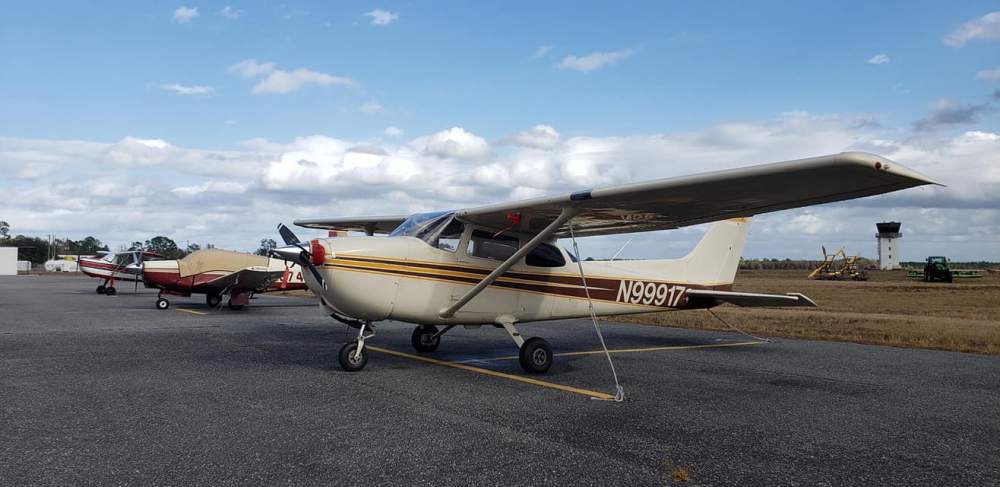
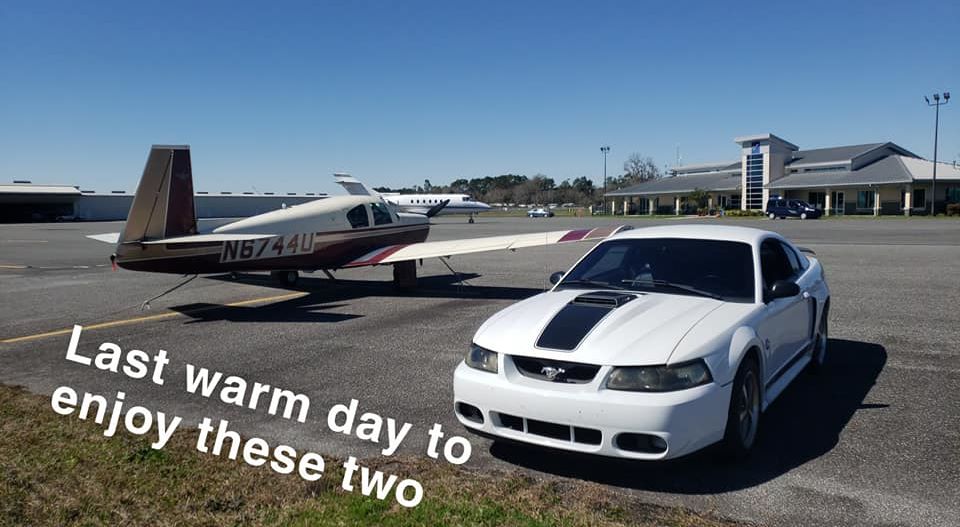
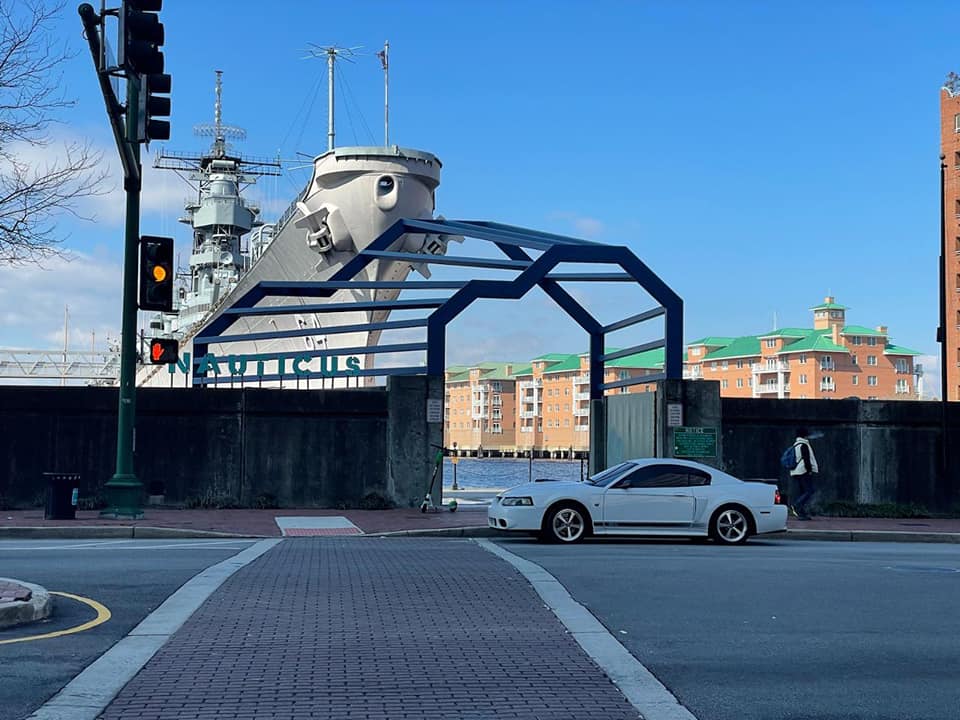
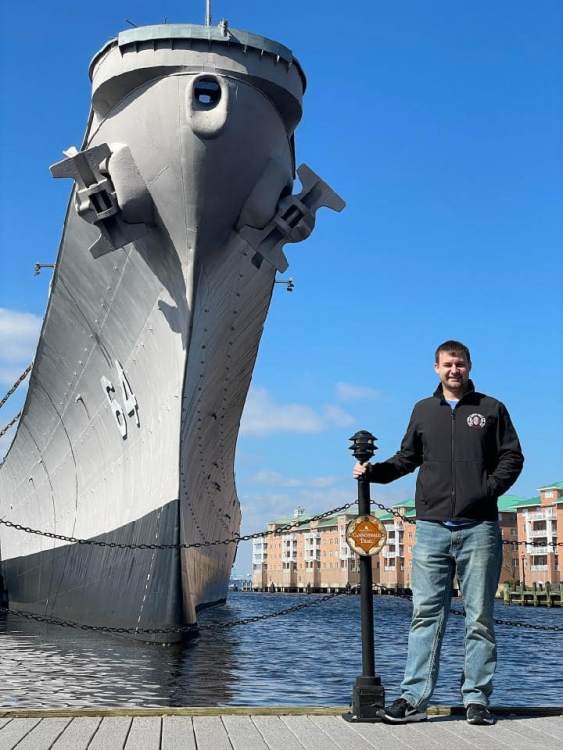
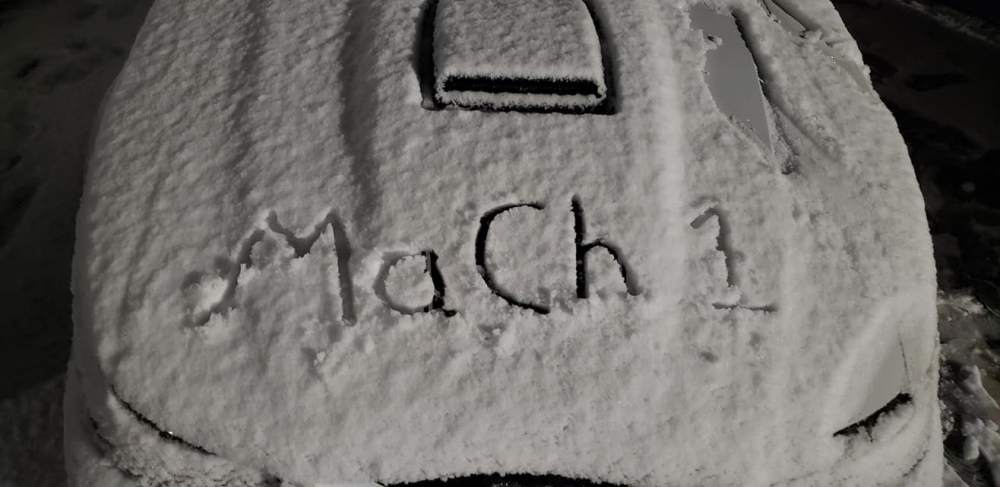
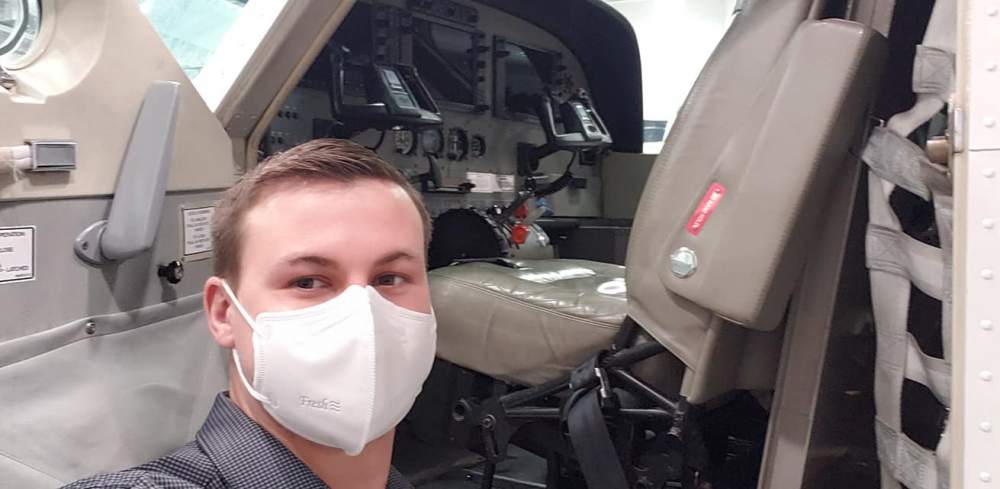
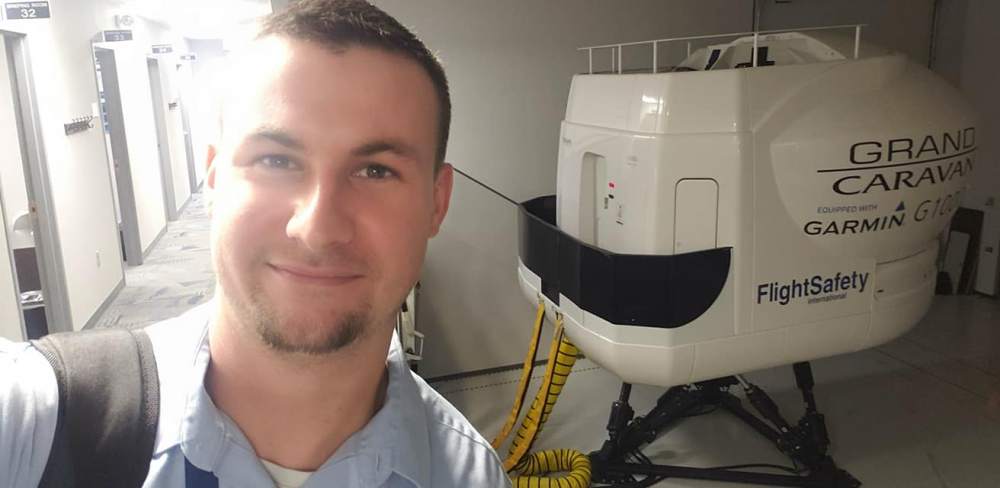

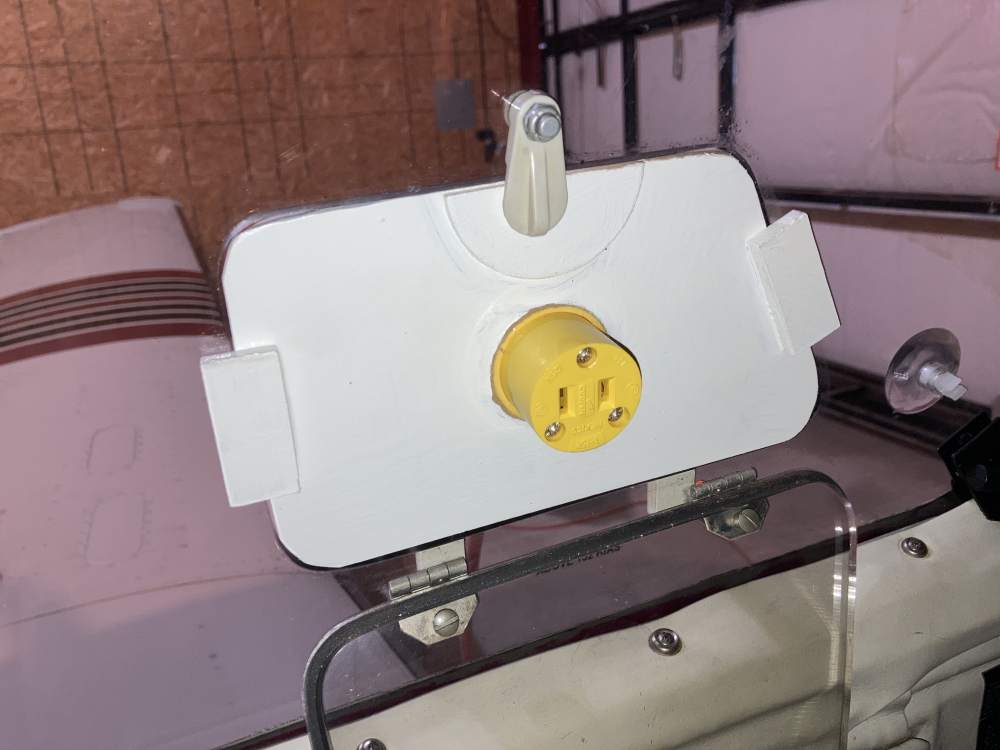
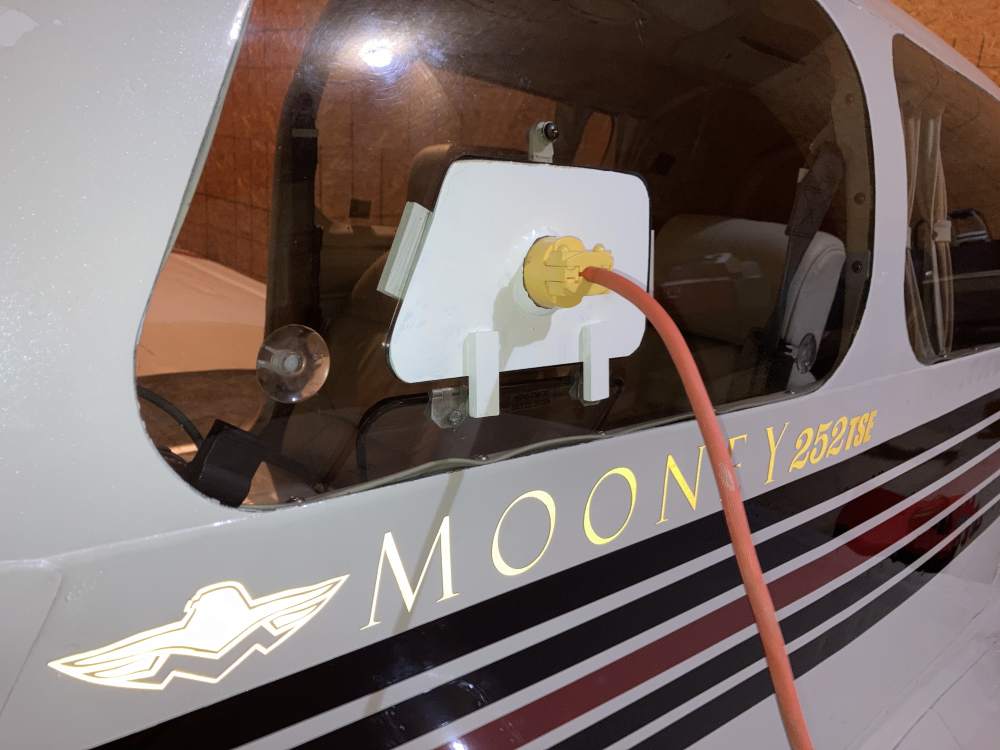
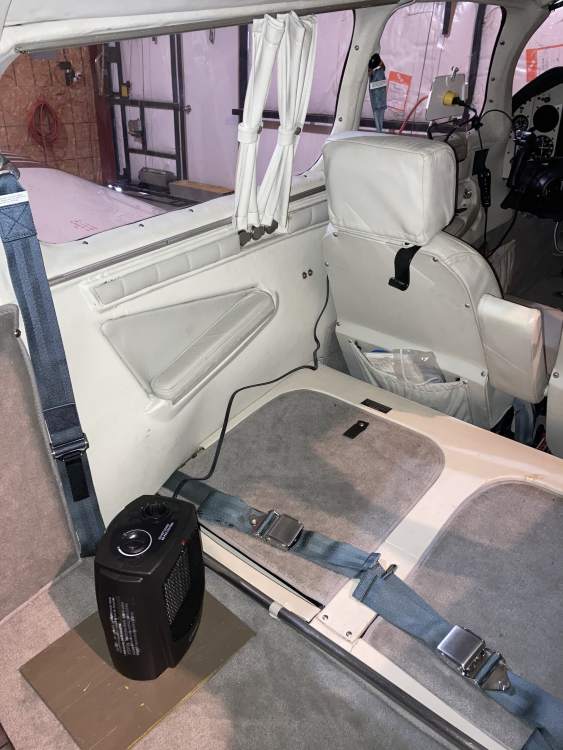
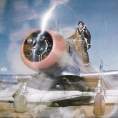
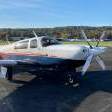

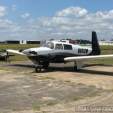



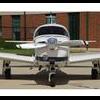
.thumb.png.7c67574d7b28f67b0b4a17760919b1ac.png)




